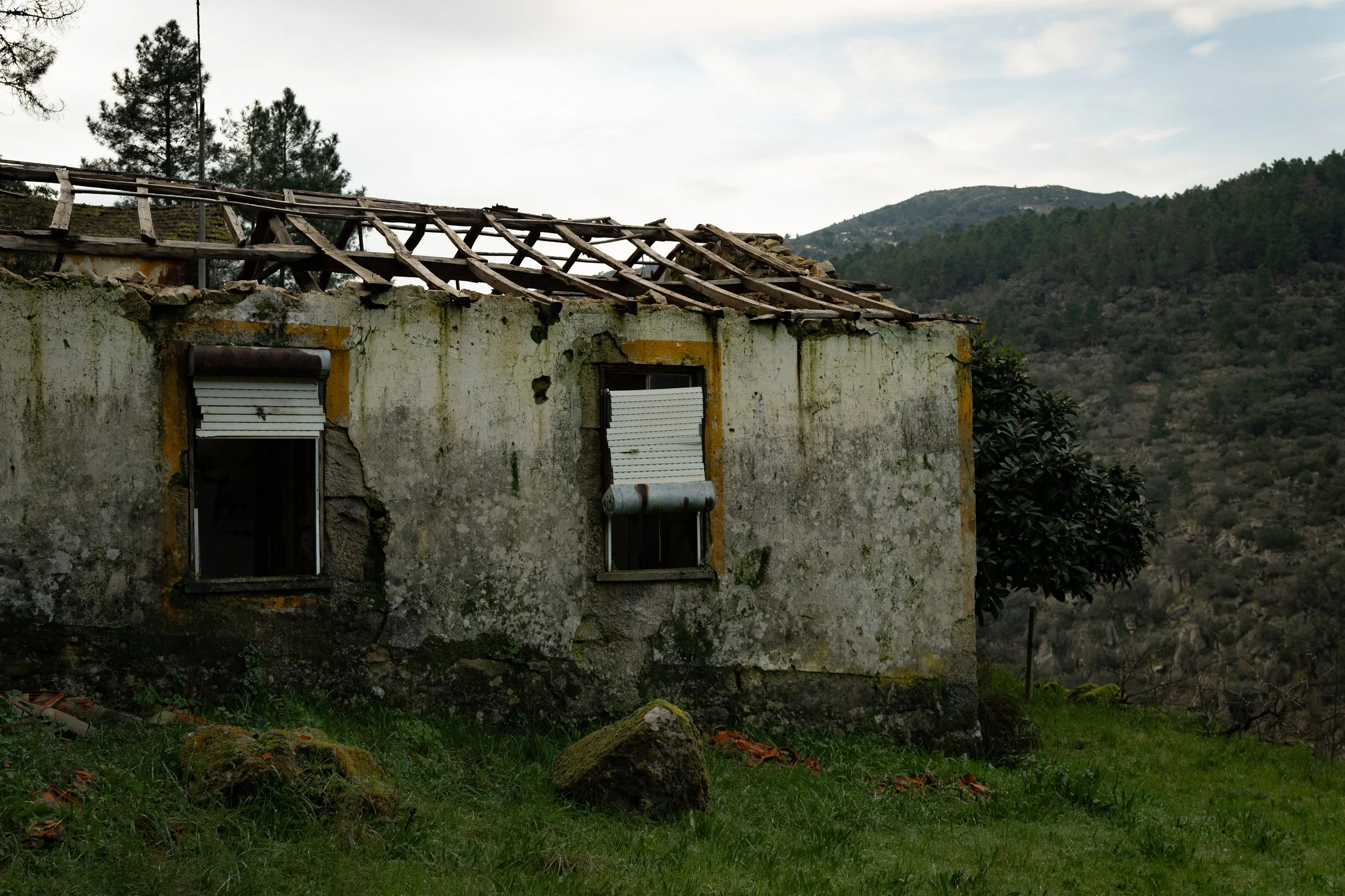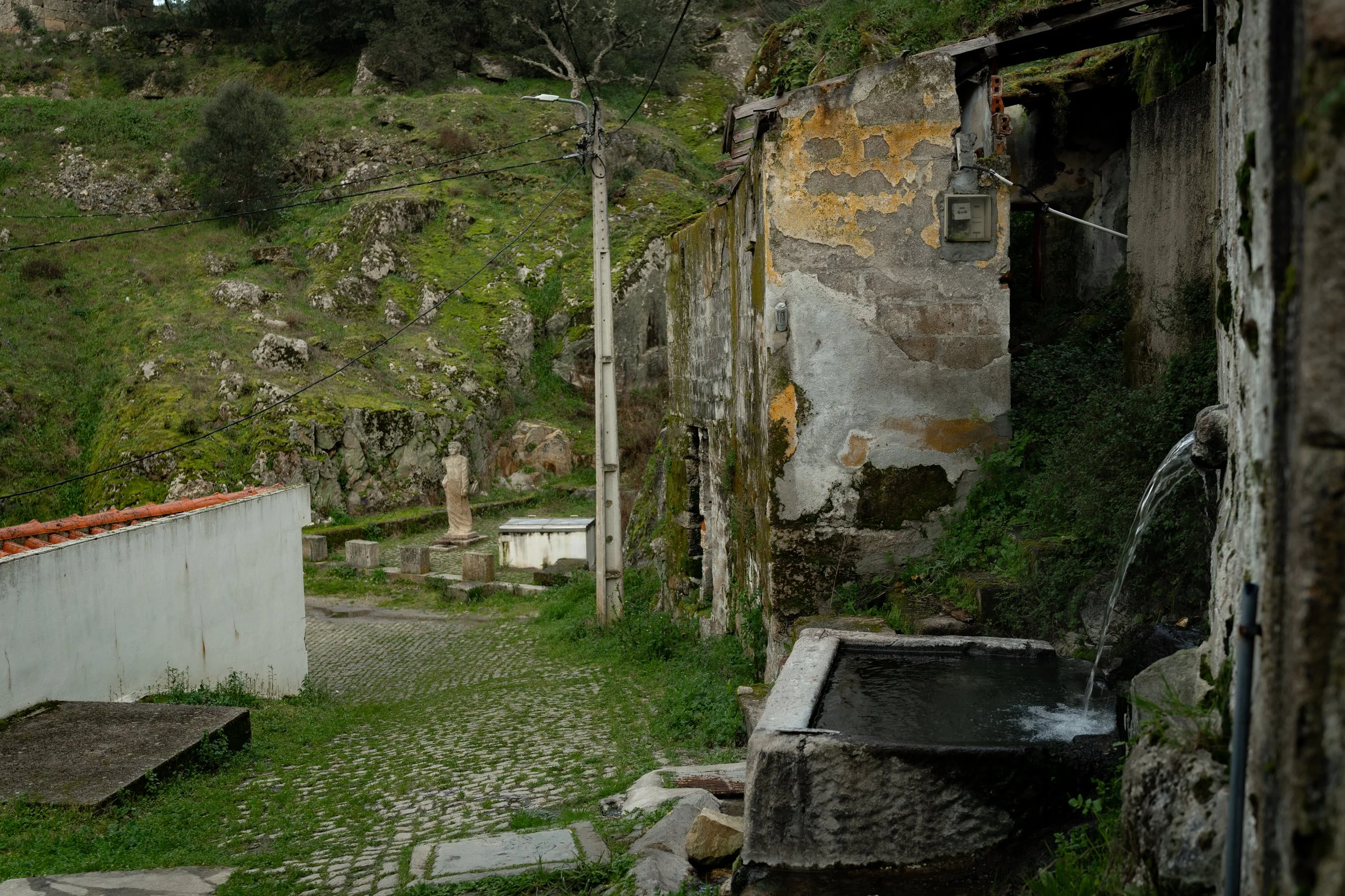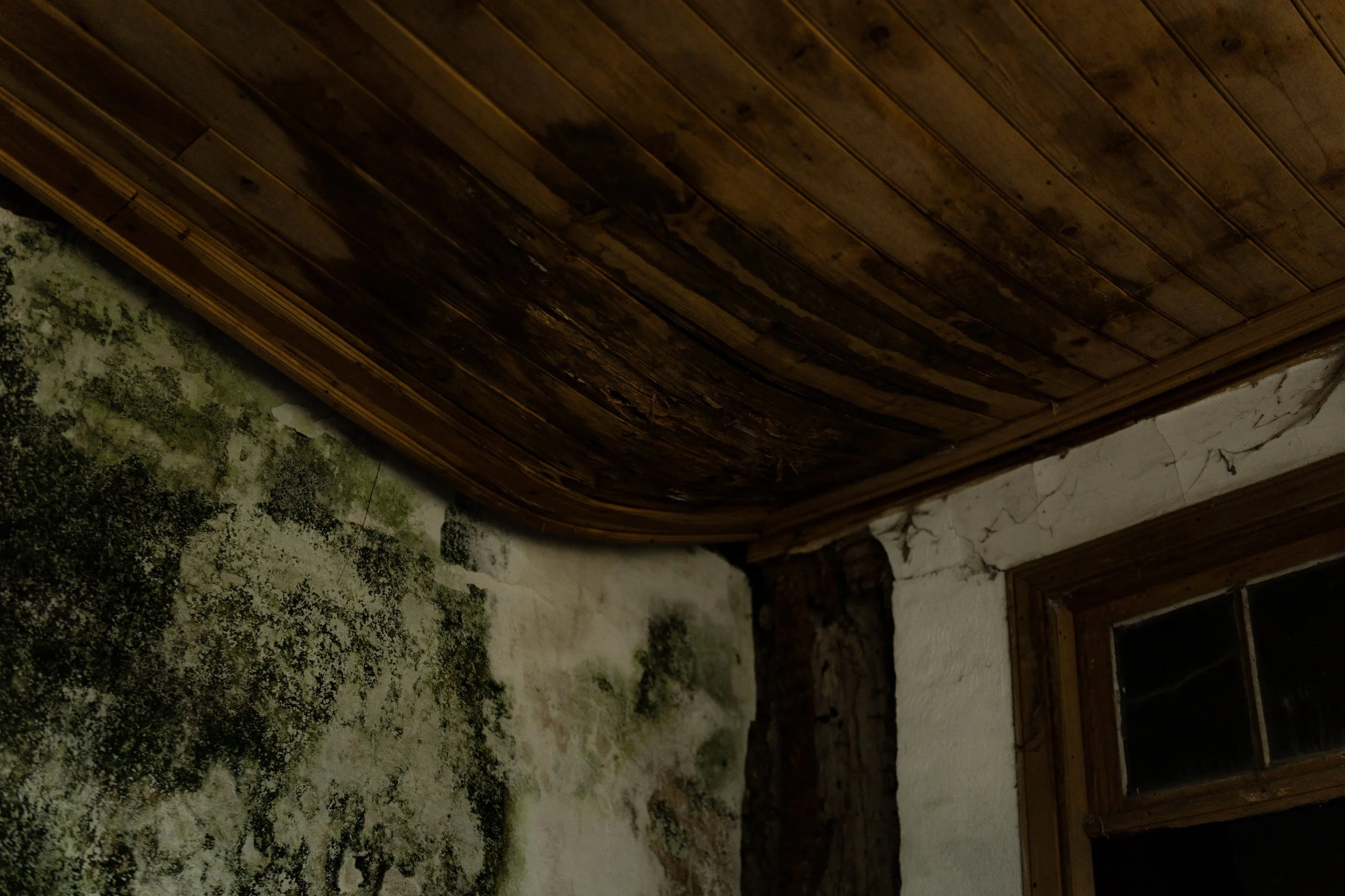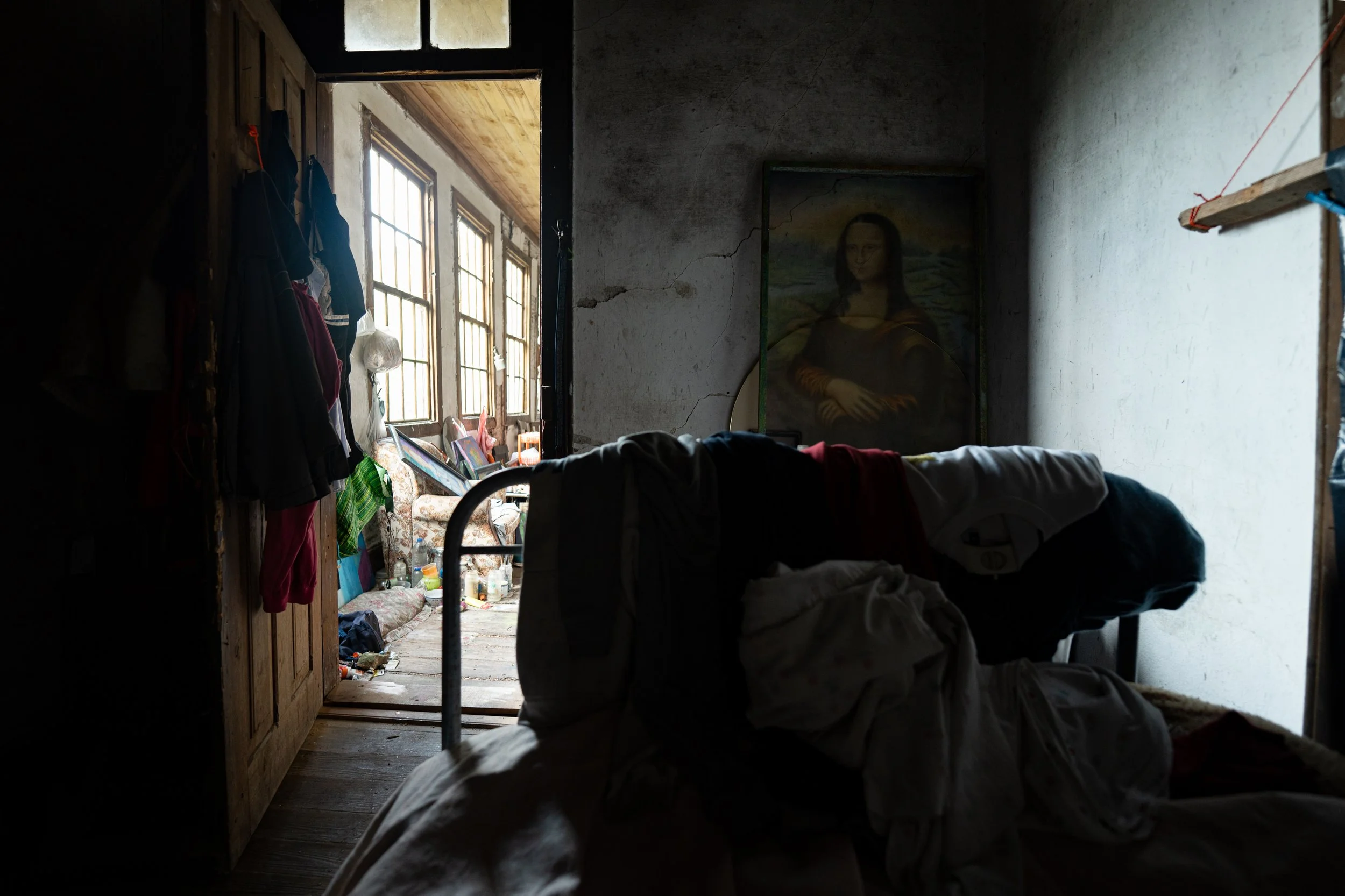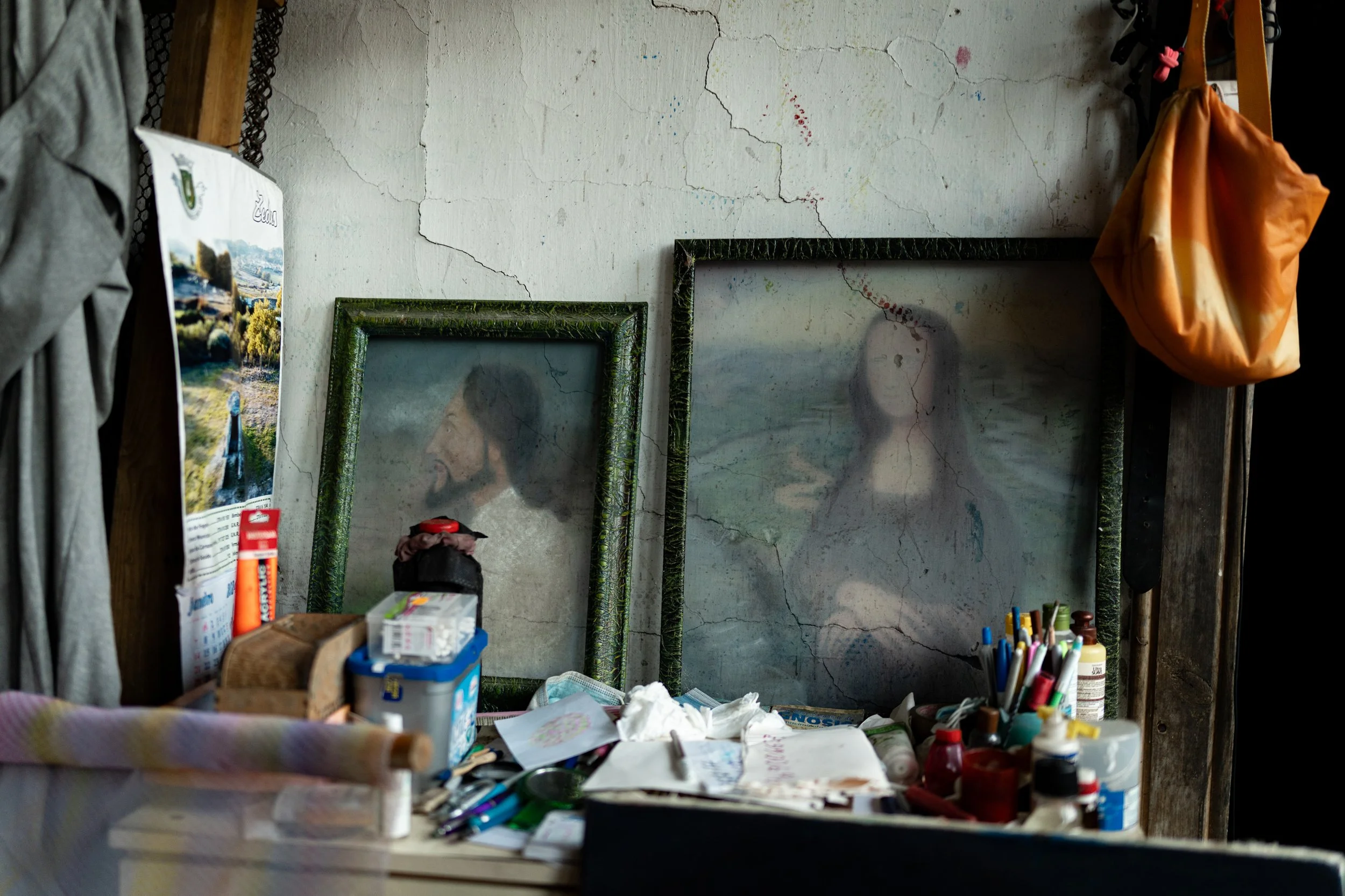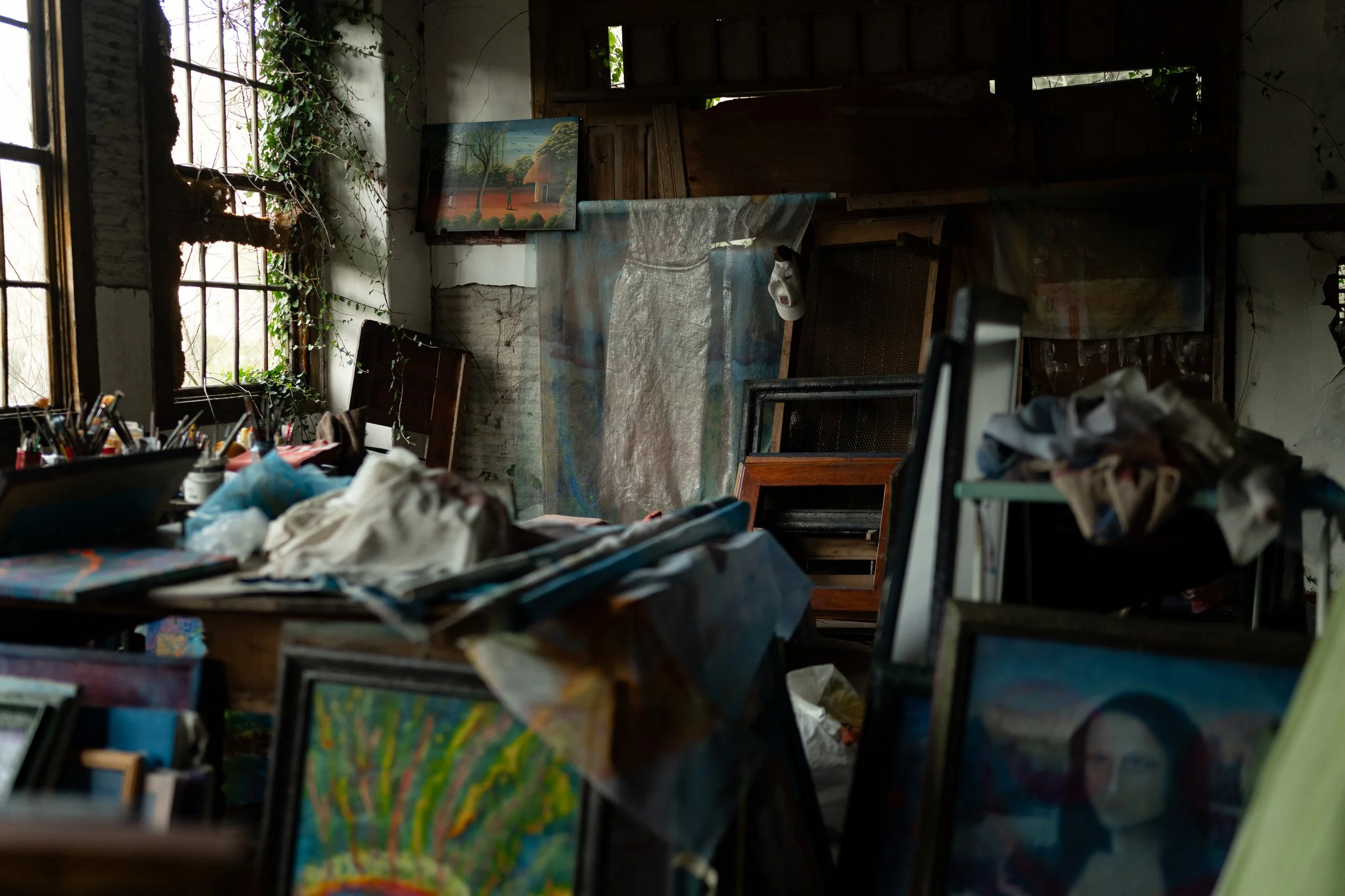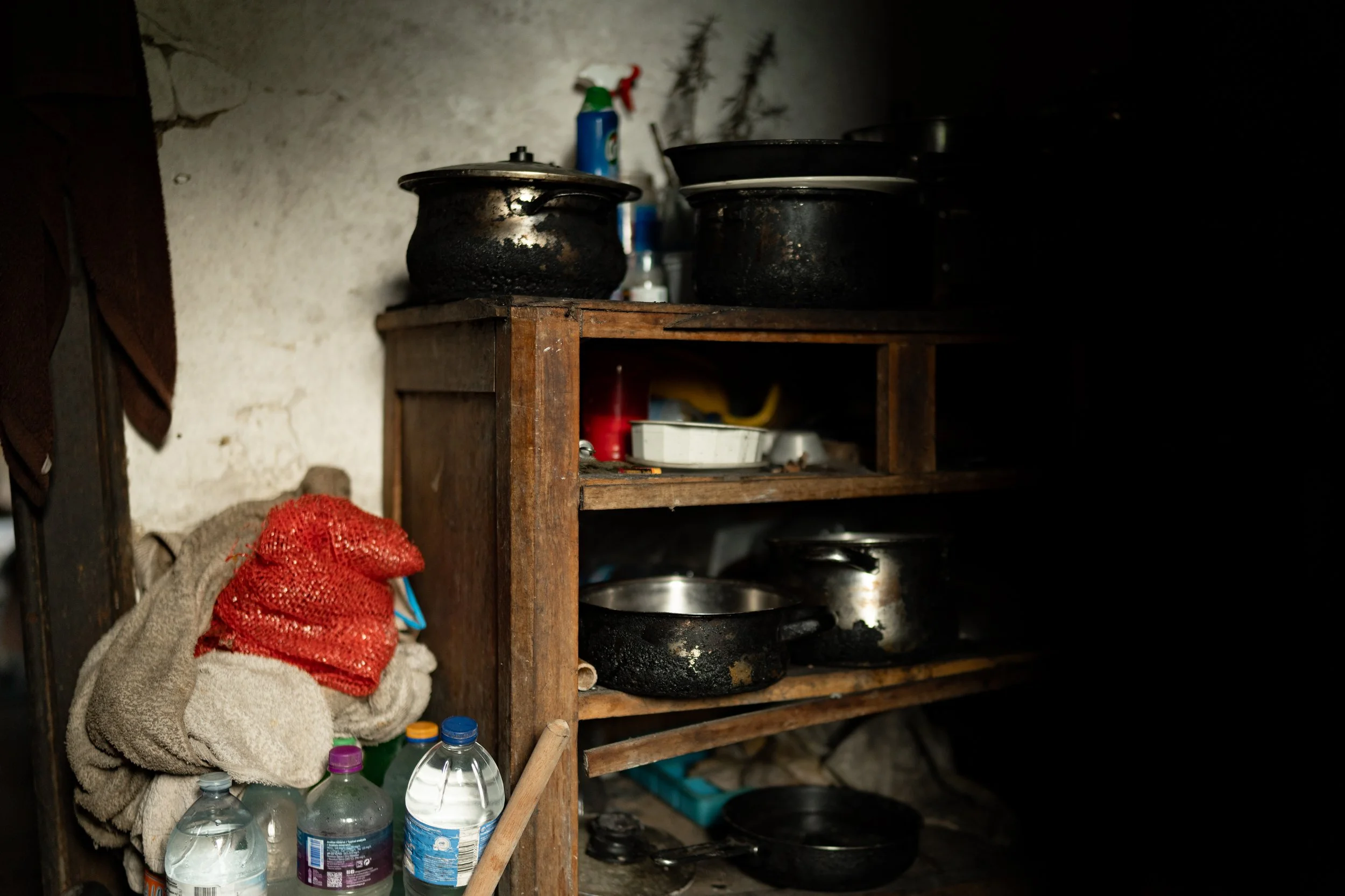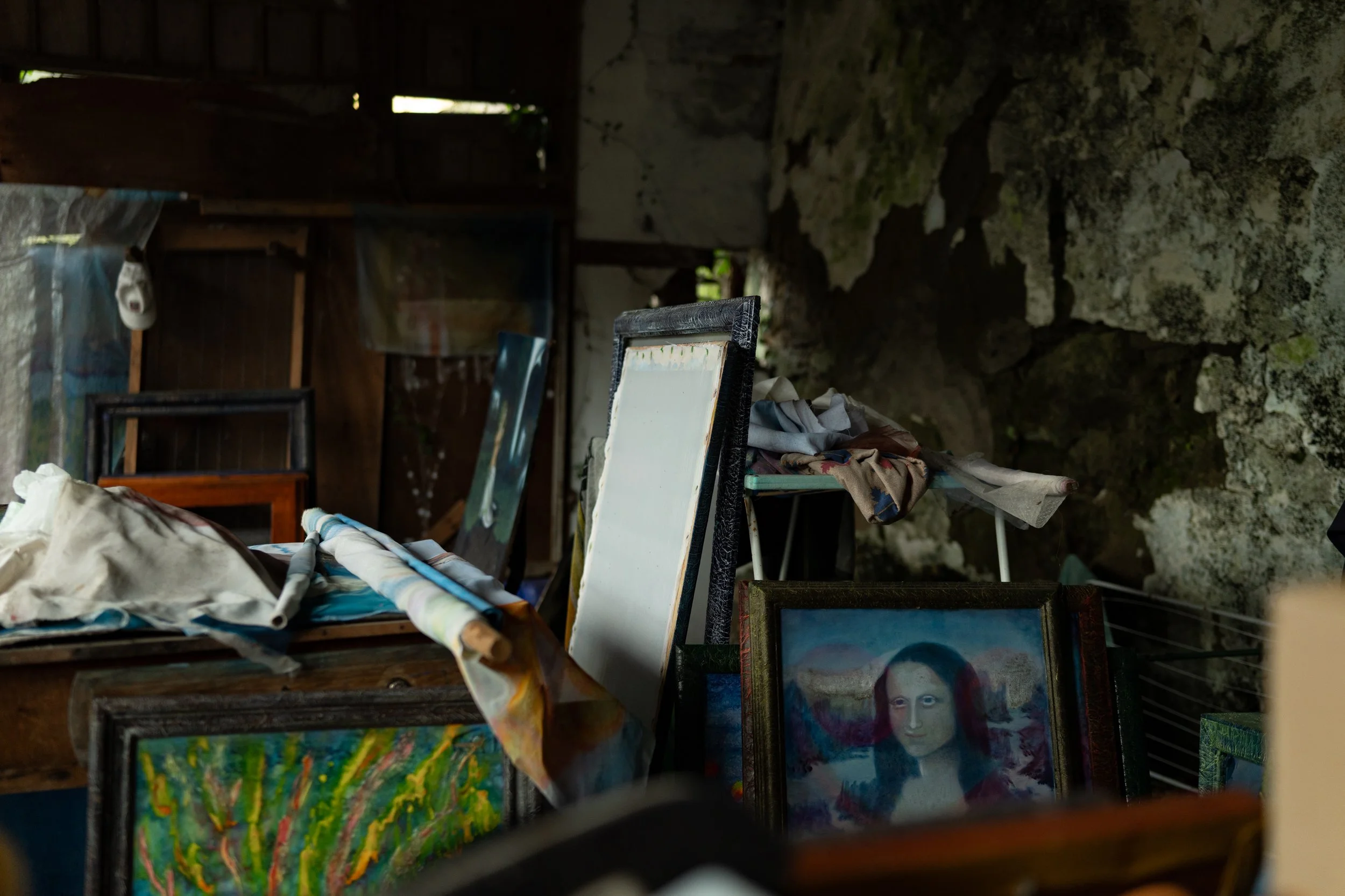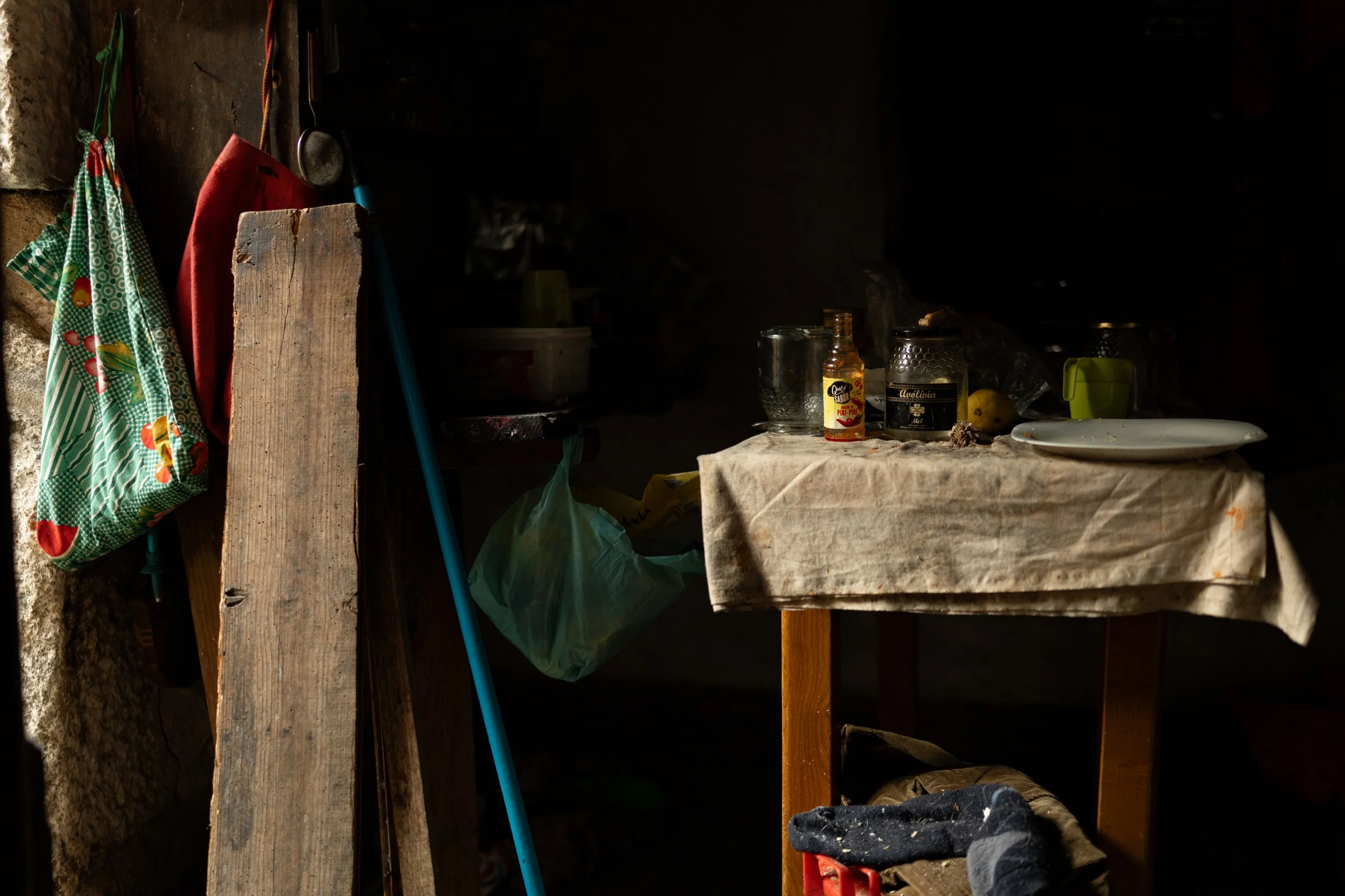Jorge, the sole inhabitant of ghost village S.L., Portugal / Ben Fuery & Lucy Pinnell
“His prolonged isolation had evidently given him much time to ponder, and as a result Jorge was one of the most intelligent and philosophical men we’d ever met. Despite the confusion of people as to why he’d want to live in a place like this, going against the rising tide of rural depopulation and urbanisation across Portugal and Europe as a whole, his mind was bright and clear. Not understanding his way of life does not make a man crazy; Jorge knew with more clarity than most what made him happy.”
Carved into the steep-sided banks of the river Tua in the north of Portugal, almost invisible from the cobbled road, lies the ghost village of S.L. Hollow-eyed houses with empty window frames and broken shutters peer unseeingly at the impressive view, garden terraces long since overgrown. Only two buildings have roofs and windows in tact, a small guesthouse, little used, and a brand new spa building that was built and decommissioned within 2 years of opening.
Wandering around the crumbling remains the smell of sulphur pervades in the air, and a small fountain spews a steady flow of steaming water into a stone basin. Upon further investigation its source lies inside an ancient pyramidal-roofed chapel, where thermal water spews from beneath a statue of the village’s patron saint and into a shallow tiled bath.
We can’t resist a bathe, even though the water is only 32ºC it’s rich in minerals, and soaking beneath the stone ceiling, blackened with age, and the ancient stone walls flickering with red candlelight feels rather like sitting at a sacrificial altar.
But who was lighting these candles? And placing fresh flowers on the stone bench every day?
It appeared that this empty village wasn’t in fact entirely abandoned…
As we wander up the steep and slippery cobble path we notice a pair of socks drying in the breeze outside one of the most dilapidated buildings in the area. Out from its hollow doorway strolls a man, not a visitor but S.L'.'’s only inhabitant. His name is Jorge, and he immediately invites us inside for a drink in perfect English.
We are not prepared for the inside of his house. The kitchen sits almost in complete darkness, blackened pots and pans stacked on wooden shelves, one containing water and six boiled eggs of unknown age. Empty bottles line the table which has been covered with a dirty linen tablecloth, and in the next room a double bed lays covered with clothes and blankets, a rendition of the Mona Lisa at its foot.
The main room is large and grand with wooden floorboards and huge pane-less windows that flood the space with light. Every available surface is covered in art supplies, and dozens, if not hundreds of paintings are stacked in every corner. The floor creaks as we pick our way over it toward a couple of stools but it holds our weight, unlike the floorboards above which are severely warped from water ingress and leaking yellow liquid into carefully placed jars. The wall in itself is like a work of art, decades of moisture creating striking patterns on the peeling plaster in hues of green. There are no houseplants, but ivy grows in through the open windows, and no heat source either.
We ask Jorge does he not get cold in the winters here?
“What comfort means to you varies from person to person. Is it difficult living here? Yes, but living in the city is uncomfortable too, with all the stress. It is impossible for me now, that way of being comfortable is no longer comfortable for me. But the need to survive is the same everywhere.
People say, “oh, you were so stupid to live alone in a place like this. Why? Why? Why? But I'm different. This is my life, it's my choice, and I love it. So I don't know if someday someone, or you, will understand the way I live my life. Maybe you'll understand. But this is my life.”
It was certainly a sentiment we, living in our van, could resonate with.
As we got to know Jorge his story began to unravel like a brilliantly coloured yarn.
Born in Peru, he was exiled around 25 years ago and came to Portugal to exhibit his artwork. But while at an exhibition in Porto he had a dispute with someone over the arrangement of his paintings and left. He asked somebody where he could find a hot sulphur spring and they pointed him in the direction of S.L., which he arrived in on the now defunct trainline. He immediately fell in love with the village, already empty and abandoned, and decided to settle. 25 years later he’s still here, living in the old dancehall that used to host weekly balls and that used to serve as an export base for local specialities: grapes, wine and olive oil were all transported out of the village by train.
But what would make a man want to settle in a derelict house alone in a depopulated village? As we continued talking it became apartment that Jorge had been suffering from depression upon arrival, which he now claims the isolation and healing thermal waters have cured him of.
“When I arrived here, I had a number of mental health issues,” he tells us. “Everything I did was accompanied by difficulties. Little by little, I began to understand what kind of trouble I was facing. The first step was to become aware of the problem I was having and where it was coming from. I realised that it was from a long time ago. I didn't realise that I was always doing the same thing over and over again, even though I was having problems. I had to look objectively and understand what is wrong. Accomplishing anything is important and is a source of strength. This will help you reach greater heights as a person one step at a time.”
It was clear we shared many of the same feelings on the detrimental effect of city life vs rural living, a constant pursuit of ours as we travelled in our van.
“I told young people that the problem with cities is that they are too caught up in their own emotional problems,” said Jorge. “It means that you don't listen to what your emotions are telling you due to stress. In other words, it's a situation where you lose yourself and don't even know what's wrong.”
His prolonged isolation had evidently given him much time to ponder, and as a result Jorge was one of the most intelligent and philosophical men we’d ever met. Despite the confusion of people as to why he’d want to live in a place like this, going against the rising tide of rural depopulation and urbanisation across Portugal and Europe as a whole, his mind was bright and clear. Not understanding his way of life does not make a man crazy; Jorge knew with more clarity than most what made him happy, and it was this way of living.
He tells us of his daily routine, rising at 4am to bathe in the hot spring and pray (possibly that his roof doesn’t one day collapse in on him) and then painting, or else venturing to the nearest town for supplies. He’d seemingly developed a small but dedicated fan base of people that would give him lifts to and from, or else bring him supplies like food and books.
Despite his isolation, Jorge doesn’t feel lonely. He has many visitors from all over Europe who come to bathe in the hot spring, and despite his growing cataracts and damp living conditions he is fit and healthy, which he attributes to the healing waters. He calls it a magical spa, a natural treatment for skin conditions and mental health problems.
We ask him about the inspiration behind his paintings; does he draw it from the landscape around him, or from the thermal waters? His many interpretations of the Mona Lisa suggest he is somewhat of a perfectionist, and the stack of psychedelic paintings in bright purples, greens and oranges hint at a deeper state of consciousness, although he tells us he doesn’t drink alcohol and hasn’t done drugs “in a long time”.
“Real life means living in the moment,” he begins, “the past is something you can never go back to, and being here now means living in the present. Just as discoveries are made every day, inspiration also enters within me.
Living in the present continues, encountering what is out there every second.
Our consciousness must always be present, even if it is placed in an enclosure.
It's difficult to keep your mind on a certain focus, and it often deviates. We are stuck in inertia for a long time. That's why it's important to live in the moment, make the present your own.
Living in the moment is wonderful and means creating knowledge.”
Freshly imbued with his knowledge and esoteric musings, our encounter was sadly coming to an end as the sun began to dip below the river banks. We immediately felt a compassion and admiration for this man, and realised in that moment that people like Jorge were the very reason we travelled- to visit hot springs of course, but also to encounter others to whom they were equally important. These people inevitably shared many of the same beliefs as us about life and nature, a kind of clarity that can only be found in disconnecting from society and its expectations.
“Before you leave, I have a little poem. I don’t know why, it seems to me that it is the right thing to say now.”
Jorge began searching among his many pots for a pen and paper, which he passed to the translator to write down, as he was now half blind and unable to write. But he could still recite, and the translator jotted down his musings in bright orange pen for us to keep.
“Descubrirás el misterio de la humildad de la luz entre las ardientes flamas de la lubricidad del fuego. Porque la escala que te sirve para bajar rectificando te levantará entre los muertos.
You will discover the mystery of the humility of light among the burning flames of the lubricity of fire. Like a staircase that helps you descend, it proves that you can rise from the dead.”
Regrettably it was time to say goodbye and part ways. Few encounters provided us such an immediate feeling of connection and warmth, and even fewer had the power to remind us what it was that we cherished so much about travelling.
Many people thought Jorge was crazy for living in such a remote place without the comforts and trappings of modern life, but as we returned to our cold, unheated van to settle down for the night in this empty river valley, door ajar to the night sky, we wondered how many others could really understand this unique and wild way of life we shared.
Translations courtesy of Hiro via NHK.
This is an excerpt from an ongoing project documenting the lives of people living in some of the most remote regions of Europe.
This project is the collective work of Ben Fuery and Lucy Pinnell. For inquiries, please email contact@lbjournals.com .




